Part 18 - “Survivor” Testimonies
Introduction
Part 17 explored some general considerations around the “survivors” of the Manchester Arena incident, reaching the predictable conclusion (based on the logic established in previous Parts) that the “survivors” are part of a narrative for which very little corroborating primary empirical evidence exists in the public domain.
In this Part, I look more closely at individual “survivors” and their testimonies.
I begin by showing that certain “survivor” testimonies are demonstrably unreliable, in the sense of contradicting the primary empirical evidence. Some only raise further questions about the role of the individual on the night. Several refer to shattered glass, as though keen to evidence the impact of a bomb blast, but are again contradicted by the primary empirical evidence.
Some common features emerge across “survivor” testimonies, including an inability to recollect events, the “surreal” and/or “bizarre” nature of those events, the unlikely physical feats the injured “survivors” claim to have accomplished, the reluctance of some “survivors” to give details about their injuries to the Inquiry, reference to shrapnel injuries as “holes” yet no credible reference to shock or blast wave injuries, lack of pain or panic, an intuitive knowledge (“just knew”) that loved ones had passed, and a miraculous ability to cheat death. I propose that the “survivor” narrative that emerges has much in common with the fictional genre of magic realism.
Certain “survivors” are then looked at more closely. Sarah Nellist’s account appears questionable on multiple levels, and it is a mystery, given the high levels of media exposure accorded to “survivors,” how she managed to evade the media’s attention until her appearance at the Inquiry in 2021. Freya Lewis’ recovery, having been very close to Salman Abedi at the moment of detonation, seems nothing short of miraculous.
It is unclear where exactly Ruth Murrell was standing at the moment of detonation, which is important, because officially she was standing next to Michelle Kiss, one of the 22 named fatalities. In the official records, there is no mention of Kiss’ daughter, Millie, and only one mention of Murrell’s daughter, Emily. Yet, in a 2020 interview, Murrell provides traumatic details in relation to both children. Nevertheless, her account is flatly contradicted by the Barr footage, in which she shows no sign of concern for either girl, or her deceased friend, or her alleged leg injury, as she nonchalantly strolls around the City Room throwing gauze onto an unidentified male.
As for the two girls, there is no irrefutable evidence proving that Emily Murrell was present, and she has remained largely invisible since, making it impossible for the public to verify any of the claims made about her. There is a great deal of confusion surrounding what happened to Millie Kiss on the night, but the one thing we do know is that she ended up featuring in an iconic photograph of her being comforted by a policewoman outside the Arena.
Unreliable “Survivor” Testimonies
Several “survivors” gave evidence that is demonstrably false. Although this may be understandable, given the traumatic circumstances implied by the official account, it does mean that we are looking at unreliable witness testimonies in a number of cases.
Janet Senior and Josephine Howarth
Janet Senior told Saunders “I’m under oath and I’m a religious person” (p. 52). However, her account, like that of her sister, Josephine Howarth, contained errors and inconsistencies.
For example, Senior was adamant that she remembered a dog being in the City Room as she lay there injured (p. 33). However, she was evacuated to the Casualty Clearing Station (CCS) before an explosives detection dog officially arrived at 23:47 (§10.126).
Although the last casualty to be taken to the CCS arrived there at 23:42, Senior misremembered the time on the train station clock as being 00:20-00:25 as she was taken across the footbridge (p. 39). So, too, did Howarth (p. 75).
Howarth told the legacy media that “the merchandise stand blew to pieces” (cited in Davis, 2024, p. 227). She told the Inquiry that she saw the merchandise stall turn “to shreds” (§17.47).
However, we know from the Barr footage that the merchandise stall survived completely intact, unaffected by shock and blast waves or indeed shrapnel, as did the giant poster behind it (see Part 8).
A close-up of the merchandise stall post-detonation. Source: Iain Davis.
Howarth and Senior were at the top of the J.D. Williams steps at 21:58, then security asked them to move on the McDonald’s steps, where they sat at the top (pp. 14-16). They remained in that area until 22:30:32, when they can be seen on CCTV having emerged from the bottom of the steps just ahead of Salman Abedi.
Source: Richplanet.net
Indeed, their movements closely resemble those of Salman Abedi, who was seen at the top of the McDonald’s steps at 21:52, where he stayed until emerging from the bottom of the steps immediately after them. The official record has Howarth and Senior emerging from the steps at 22:30:36 (p. 16), which would be after Abedi, not before.
Despite being in the same small area together (with Abedi) for over half an hour and emerging from it only four seconds apart, Howarth claimed not to have noticed Abedi (p. 66), who had a large rucksack with him, and Senior mentioned him in her second witness statement but not the first (p. 17).
The McDonald’s steps are visible on the right. Source: Richplanet.net
Paul Price
Paul Price, the partner of Elaine McIver, claimed in a witness statement dated August 1, 2017, that he saw Elaine “lying face down on some steps” after the explosion (p. 46). This does not comport with the official placement of her four metres away from the bomber (p. 46), however, since the steps were further than four metres away.
Andrea Bradbury
Bradbury told the Inquiry “this was an opportunity for me to put a dress on and become a lady instead of a cop” (p. 106), yet CCTV imagery shows her wearing trousers. When Saunders pointed this out to her, she replied
I’ve actually got a top on, Sir John — and a handbag. It’s sort of a dress top with leggings. I struggle with dresses after being in black and trousers all my career” (p. 109).
Readers can judge for themselves:
Andrea Bradbury (top), caught on CCTV at 21:51:07. Source: Richplanet.net
In Part 16, I asked who the woman below is, with her left knee apparently raised, attending to her lower left leg:
Based on the haircut and facial profile, could it possibly be Andrea Bradbury, minus the jacket? The pixelation makes it hard to tell.
At 22:28:01, Bradbury was standing in the position ringed in white below, just to the left of the line of sight drawn from the centre of the CCTV camera frame to the corner of the room.
Source: Richplanet.net, with my annotations in white
The woman in the pixelated image can be traced on a line of sight from the centre of the Parker photograph to the end of the first set of double doors:
The two lines of sight above are reproduced in black on the diagram below (see Part 14 for the calculation of the diagram). They intersect near the top of the area ringed.
If Bradbury and Whittaker were standing to the left of Lees [18] and Howe [17] at 22:28:01, with a person’s gap between them and Bradbury furthest to the left, then Bradbury would only have needed to take a few steps forwards to be in the position of the pixelated woman in the Parker photograph.
If Bradbury is the same woman who appears in the Parker photograph, then her account of her actions post-detonation is fabricated. However, the pixelated image is too blurry to draw any firm conclusions.
Shattered Glass
Keen to evidence a bomb blast, several witnesses erroneously referred to glass shattering.
Most notably, Andrea Bradbury mentioned the ceiling coming down on three separate occasions at the Inquiry:
“Then I heard the boom as the ceiling went” (p. 124).
On the phone to Counter Terrorism, she claims to have stated “you may get reports of a secondary explosion, but to my mind that’s the ceiling having gone” (p. 139).
She told someone whom she erroneously thought was the Gold Commander at GMP HQ “I think the ceiling has gone” (p. 145).
Bradbury also told the Sun in May 2022 “I can remember hearing this massive explosion that took the ceiling down.”
Josephine Howarth claimed that “glass crashed down from the roof, which is why I thought I’d got glass in my leg” (p. 68). Even on her own account, however, it turned out not to be glass in her leg, but, rather, two bolts (p. 71).
Jonathan Woods claimed in his witness statement:
At the same time I saw the glass panes of the offices shatter as had the glass ceiling and the glass in the hand rails. I realised that I was being showered by glass that was falling on me and getting into my clothes and down the neck of my shirt.
Yet, as Pighooey argues, we know from the drone sent up by UK Critical thinker, the Barr footage, and the Parker photograph that there was no evidence of the skylight having shattered. That would have been a major event that most eye witnesses would have mentioned in their testimony, but hardly any did.
Bomb Scene Manager Robert Gallagher told the Inquiry that a couple of panes fell around 10am the next morning, but as discussed in Part 12, that, too, seems highly unlikely.
Darah Burke GP told the Inquiry that he and his family exited the City Room through the glass doors to the train station, which were smashed, so that they could pass straight through them, rather than having to open them (p. 58).
Darah Burke GP. Source: Manchester Arena Inquiry
Pighooey carefully demonstrates, however, from CCTV and photographic evidence, that the doors were not smashed, but were, rather, completely intact, with no evidence of damage to them.
It should also be noted that Burke told the Inquiry that he, his wife, and his daughter were on the footbridge “for roughly an hour" (p. 65). Select the “Bridge” area on the RichPlanet viewing app — can you see them anywhere?
Common Features of “Survivor” Testimony
As they gave evidence to the Inquiry, several notable features emerged in common across multiple testimonies.
Lack of Recollection
Consistent with the experience of a major traumatic event, multiple witnesses struggled to recall what happened following the detonation.
Lisa Roussos, for example, was unable to “recall the details of [her] injuries or the surgeries,” having been placed in an induced coma, but her legal representatives provided the relevant details from “the medical records,” which she confirmed at the Inquiry (p. 155). There is some confusion how long she was in a coma for: the Guardian initially reported that she awoke after eight days; Andrew Roussos told the BBC in 2019 that it was six weeks; and the Inquiry put it at two and a half weeks (§17.110). What explains those rather large discrepancies?
Robby Potter told the Inquiry
I saw people falling to the floor in front of me and around me. I don’t recall falling over myself or being knocked off my feet but I can’t say for sure. I don’t even recall being blown backwards, but have subsequently been told that I was. (p. 9)
Lucy Jarvis told the Inquiry
The blast happened. It was really weird, I don’t really fully remember, like, I didn’t hear it, I just remember feeling really hot, all of a sudden […] just being on the floor […] (23:20).
Thereafter, Jarvis claimed,
I don’t really remember seeing anything else around me, it was almost as though I had tunnel vision of just Millie [Amelia Tomlinson…] It was quite lucky, obviously, that I didn’t get to see some horrific things. (26:00-26:25)
When she was carried to the Casualty Clearing Station on a stretcher, the two men carrying her told her to look up, not down, which she was glad she did (34:00). It meant that she did not see the scene around her.
PC Natalie Dalby (GMP) was not a “survivor,” but she, too, claimed to have had “tunnel-vision” and poor recall:
I recall very few details of the injured [redacted] in detail, or the scene in general. I assume that this lack of recall is due to how my brain processed what was going on around me. I had “tunnel-vision” in respect of what I needed to consider and do. I did not get distracted by the horrific scenes, focussing purely on the job in hand was the way in which I coped.
Lauren Thorpe, who does not appear to have sustained any injuries, told the Inquiry “I saw a flash to my right side, just behind me. The next bit is blurred and it is difficult to remember exactly what happened” (p. 49).
It is well known that people have a psychological defence mechanism that blanks out traumatic events. Forensically speaking, however, this does not help us get to the bottom of what happened in the City Room.
“Surreal”/”Bizarre”
Another common theme across witness testimonies was that the incident seemed “surreal” or “bizarre.”
Bradley Hurley, for instance, told the Inquiry “It was surreal. The whole thing was just so surreal” (p. 193). For example, despite claiming to have been “burning all over,” he simultaneously claimed that it was “like I was underwater […] like I was under the water” (pp. 158-159). He claimed it was “just bizarre” to be in so much pain for so long (over four hours) (p. 180). Saunders remarked “I have no idea how you got through telling us that today” (p. 215).
Bradley Hurley. Source: Manchester Arena Inquiry (03:22:08)
Robby Potter, who took part in the BBC’s Manchester: The Night of the Bomb, told the Inquiry “It all seemed surreal” (p. 9).
Claire Booth described the experience of being carried in a wheelchair down two flights of stairs as “surreal” (p. 111).
Ruth Murrell, in a January 2020 interview, gave a rather peculiar description of what happened:
Literally, it was just bizarre. There was this, just, a really loud bang and a horrible smell of fireworks and I felt something go in my leg. And I looked down and could only see a tiny little hole in my jeans, so I thought “Ooo, something’s gone a bit wrong here,” so I turned round to Michelle [Kiss] to say “what the hell was that?” and Michelle was dead on the floor at the side of me with blood coming out of her head. […]
Travel Safe’s Philip Clegg, who ran into the City Room within minutes of the bang, claimed in his second witness statement:
After taking a few steps forwards into the foyer I scanned the room, I saw that there were a lot of people, just lying down. It was surreal, I heard no sound, nothing at all, almost peaceful.
Numerous people lying down in silence (another common feature of eyewitness accounts), rather than screaming in agony or crying out for help, seems more consistent with a drill than with a real mass casualty event involving lots of seriously injured people.
It is clear that, for whatever reason, the incident did not seem real to some “survivors.” Perhaps this is because traumatic events sometimes do not seem real (as in “this cannot be happening”); perhaps it is because the incident was staged. In light of the many questions surrounding the incident, we would be wise to keep an open mind.
Unlikely Physical Feats
In Part 15, we saw that numerous eyewitnesses (Andrea Bradbury, Barbara Whittaker, Sarah Nellist, Suzanne Atkins, Elaine Alexander, Ronald Blake, Jonathan Woods) claimed to have been knocked to the ground by the force of the blast, only to get straight back up and go into action — which in no way comports with Professor Bull’s horrific description of the nature of blast injuries.
In addition, multiple “survivors” claimed to have achieved the most unlikely of physical feats.
Janet Senior, for example, who was 60 at the time, was somehow able to withstand the shock and blast waves from a TATP bomb only 11-12 metres away: “obviously it certainly knocked me about. But I don’t believe I fell over, I just believe that I stood against the energy” (p. 22).
Having just told the Inquiry that she “couldn’t run” because a bolt had gone through her foot, Amelia Tomlinson confirmed that she “ran back towards the arena doors,” across the concourse, and back into the Arena (p. 9).
Lucy Jarvis, who concluded her evidence with the long list of injuries laid out at the start of this article, told the Inquiry
I don’t know how I managed to do it, but I managed to get up off the floor and follow her [Amelia Tomlinson] in [to the auditorium] […] I later found out, when I was in hospital, that I had a really bad ankle injury, and they were surprised that I was able to stand up, let alone walk and run back into the Arena. (pp. 55-56)
As the Barr footage shows, Ruth Murrell was casually walking around the City Room 12-15 minutes after a bolt had supposedly passed 15 cm through her right thigh and her friend, Michelle Kiss, had been killed standing right next to her. Murrell claims that she ran up “about 5 stairs,” grabbed her injured daughter, Emily, and “carried her down the stairs,” fuelled by “adrenaline.” As Davis (2024, p. 289) observes, however, the mechanical disruption to Murrell’s anatomy would have left her incapacitated and unable to walk, regardless of adrenaline or her mental state.
Andrea Bradbury described her body as having been “peppered and dotted” with shrapnel and her calves as having been “strimmed with a wire garden strimmer.” Nevertheless, she then reportedly walked for 40 minutes in search of her daughter and her daughter’s friend. She, too, told the Inquiry that “adrenaline” had enabled this:
To be honest, I’m amazed now that I ever managed to get that distance — the following days, I couldn’t walk. I think it ’s just pure adrenaline and the desire to get to your kids. (p. 141)
Bradley Hurley, despite claiming to have suffered the horrendous injuries listed near the start of this article, told the Inquiry that he “covered a couple of people myself” (p. 31). How he managed to do this with two broken legs, second degree burns, and other shrapnel injuries is a mystery.
All of the physical feats above are utterly implausible and speak once more to the unreliability of “survivor” witness testimonies.
Reluctance to Give Injury Details
As explained in Part 15, the Inquiry had a policy of minimizing injury detail wherever possible. “Survivors” were offered the choice of how much injury detail they were willing to disclose. Some gave extensive injury details (e.g., Lisa Roussos, Martin Hibbert, Lucy Jarvis, Claire Booth, Bradley Hurley, and Darah Burke). Others did not.
For example, Paul Price claimed to have been “seriously injured as a result of the arena attack,” but did not want to give details (p. 58). He did give extensive details to Hudgell’s, however. His facial scarring appeared to heal quickly (Hall, 2020, p. 48).
The nature of Sarah Nellist’s injuries remains a mystery, because she did not wish to disclose that information at the Inquiry (p. 40).
Janet Senior, though willing to disclose a basic level of injury detail, remained reticent:
Q. You don’t want to give full detail of the injuries you sustained that night or what happened to you subsequently in terms of the ongoing and lasting effect and treatment that you’ve asked me to summarise in that way; would that be fair?
A. Yes.
Q. But in terms of the physical injuries you sustained that night, you are happy and you would wish for them to be referenced as a penetrating chest injury?
A. Mm−hm.
Q. An injury to your neck, but also to your clavicle?
A. Mm−hm.
Q. And I think you also describe some other impact injury as well?
A. Mm (p. 23)
Josephine Howarth, too, was unwilling to reveal very much about her injuries:
SIR JOHN SAUNDERS: Just say yes or no to this or don’t if you don’t wish to. You were obviously very seriously injured.
A [Howarth]. Yes. (p. 80)
Other than being reminded of what it felt like to be kicked by a horse (p. 70), Howarth did not reveal anything further about her injuries.
Thus, while few “survivors” relative to the alleged total were called to give evidence to the Inquiry, some of those who were revealed very little, if anything, about their injuries.
Shrapnel Injuries Without Shock or Blast Wave Injuries
Recall from Professor Bull’s testimony in Part 15 that blast injuries are potentially comprised of five different elements, the first three of which are relevant in the case of a TATP shrapnel bomb. Primary injuries come from shock waves capable of shearing muscle from bone; secondary injuries are generated by the impact of the shrapnel; and tertiary injuries are caused by the crushing effects of the blast wave. The combined effects are typically much worse than a bad road traffic accident.
Evidently, “survivors” were unaware of the physics of blast injuries as they gave their evidence. It is noticeable how many of their injury accounts rely entirely on nuts and bolts flying everywhere; there is never any mention of shock wave and blast wave injuries that would be compatible with a bomb blast.
To give one example among many, Janet Senior claimed that “something knocked my thumb and knocked my phone out of my hand” (p. 25), as though individual projectiles were able to impact highly specific locations without being accompanied by shock and blast wave effects.
Several “survivors” sought to convey the impact of shrapnel on the body in terms of “holes.” For example, Claire Booth said that her daughter’s legs were “covered in holes” (p. 87). Robert Potter claimed “I looked down and I was full of gaping holes.” Martin Hibbert claimed that his body was “full of golf ball-sized holes.” Bradley Hurley told the Inquiry that he had “11 large holes in his leg and a large hole in his foot” (§17.102).
Is this what shrapnel injuries really look like, or is it what someone with little understanding of shrapnel injuries might imagine them to look like?
Lack of Pain
A surprising feature of some (not all) “survivor” accounts is lack of pain.
For example, despite concluding her evidence to the Inquiry with a long list of serious injuries, Lucy Jarvis had previously stated that
It was really weird that I didn’t feel any pain at that point, because you would think, you know, that I would feel something. (28:08)
Jarvis also referred to “having another injury I didn’t know about” when her arm was bandaged on the Arena concourse, attributing this to shock (29:45).
Amelia Tomlinson told the Inquiry that she could not feel that a bolt had passed through her foot and so could not understand why she was unable to run (p. 9).
Ruth Murrell claimed that
A PCSO [Police Community Support Officer] had come up from the station [and he] said “are you hurt?” and I said “no.” […] I was completely oblivious to my wounds, I didn’t really feel them but they say that’s adrenaline kicking in […]
Josie Howarth did not know for 2-3 days that she a “second bolt and debris on my inner thigh” (p. 71). She must not have noticed an entry wound or felt any pain in that area.
Although Kelly Brewster had died, to Claire Booth she “didn’t look injured or hurt in any way” (p. 79), and she strangely disappeared from view soon afterwards (p. 94).
Given the severity of their injuries, it seems very strange (surreal even) that certain “survivors” felt no pain, at least not in the short term.
Lack of Panic, Calmness
Another surprising feature of “survivor” testimonies is calmness shown in the face of traumatic circumstances.
Martin Hibbert, for example, despite claiming to have seen his daughter’s brains through her skull while lying critically injured on the floor next to her, told the Inquiry “I wasn’t in any pain. I wasn’t panicking” (p. 8).
Bradley Hurley, seriously injured himself, looked across at his sister, Megan Hurley. “I feel like I knew very quickly that she’d died,” he told the Inquiry; he “felt a mad type of calm” and “didn’t feel panic at all” (pp. 161-162).
It is noticeable how similar Hurley’s testimony was in certain respects to Hibbert’s. Hibbert gave evidence on the morning of July 22, 2021, Hurley in the afternoon.
Claire Booth, fearing that her sister, Kelly Brewster, might be dead, and faced with serious leg injuries to her daughter, Hollie, not to mention her own P2 injuries, “felt strangely calm” (p. 85).
Janet Senior, injured herself and worried that her sister, Josie Howarth, might have an arterial bleed (p. 25), told the Inquiry “I was calm” (p. 39).
PCSO Jon Morrey (BTP) told Sky News that “Most of the people I treated were very calm.”
The Barr footage shows a very calm scene, with people casually strolling around and not exhibiting any sense of urgency or panic.
Strangely, all the panic appears to have taken place outside the City Room, in the stampede that ensued as concertgoers sought to flee the Arena (see Part 15). For some reason, it seems hard to find any evidence of people panicking inside the City Room, despite the horror that was allegedly unfolding there.
“I Just Knew”
At least three “survivors” claimed that they “just knew” that their loved ones had passed:
Bradley Hurley told the Inquiry “I just feel like I knew very quickly after it happened that she [his sister, Megan Hurley] had died” (p. 161).
Lesley Callander told ITV “I just knew something had happened to her [her daughter, Georgina Callander], and it must have been serious, because she couldn’t get to her phone to ring me” (14:00).
Lisa Roussos, according to the Inquiry report, “said her last thought before she went into the coma was about Saffie-Rose, and she ‘just knew’ when she woke up that Saffie-Rose had died” (§17.110).
Perhaps people do intuitively know when loved ones have passed, but this is another line of continuity between “survivor” testimonies that involves claims which are emotive yet unverifiable.
“Miraculous” Cheating of Death
Adding to the air of unreality around “survivor” testimonies, several “survivors” reported having miraculously cheated death.
For example, a 49-year-old mother, who wished to remain anonymous, told the Mail on the night that she was three metres away from the bomb and that it was a “miracle” she was still alive.
The Manchester Evening News claimed that “If Lisa [Bridgett], 45, wasn’t on the phone at the time, the nut could have ended up in her head.” Her husband “spoke of how lucky his wife was to be alive.”
The Mirror, on August 11, 2017, ran with the headline “‘Miracle father’ millimetre from death when his heart was pierced by bolt from Manchester Arena bomb.” Robby Potter claimed his doctor had called him a “miracle lad” for surviving with a bolt wedged between two blood vessels, such that a millimetre either side could have proven fatal. The article included a purported X-ray of the bolt in Potter’s chest, not unlike the purported X-ray of Martin Hibbert discussed in Part 3, or the alleged X-ray of a bolt in Josie Howarth’s thigh published in the Manchester Evening News.
Robby Potter and Leonora Ogerio. Source: Mirror
Andrea Bradbury told the Sun
I don’t know anyone alive that was closer to the bomber than Barbara [Whittaker] and I. And almost everyone around us was killed. I had 12 shrapnel injuries below my waist, two in my back and a bit of the battery in my right leg. One bolt hit my handbag and another went through the strap — it was a miracle I wasn’t killed.
Martin Hibbert, who told the Inquiry that he sustained 22 shrapnel wounds, including a severed neck artery, miraculously survived, despite not being taken to hospital for two hours. So, too, did his daughter, Eve, who, in his words, looked “almost as though she had been shot through the head” and proved to be “the only person to survive that injury in the world.” Hibbert described Eve’s survival as “a miracle” (see Part 7).
The miracles continued when, after just a few days of working with an Australian body builder without any medical credentials in 2018, Hibbert “could wiggle his toes, pull himself into a standing position, kneel and even crawl.” No longer was he paralysed from the waist down, despite telling the Inquiry that he had sustained a complete T10 spinal cord injury on May 22, 2017. He called the treatment a “miracle.”
A miracle is an event which does not follow the usual laws of nature. Were the individuals above blessed by some kind of divine intervention? Or are their stories so unbelievable that they require recourse to the supernatural to make sense?
Summary
To recap, some interesting patterns emerge across “survivor” testimonies, involving:
an inability to recollect events;
the “surreal” and/or “bizarre” nature of those events;
the unlikely physical feats the injured “survivors” claim to have accomplished;
the reluctance of some “survivors” to give details about their injuries to the Inquiry;
reference to shrapnel injuries as “holes,” but not shock or blast wave injuries;
the lack of pain experienced by certain “survivors,” at least in the short term;
the calmness and lack of panic shown by some “survivors”;
claims by certain “survivors” that they “just knew” their loved ones had passed; and
a miraculous ability to cheat death.
“Survivor” Testimony and Magic Realism
The “survivor” narrative that emerges has much in common with the fictional genre of magic realism.
On the one hand, the subject matter seems highly realistic, grave, and down-to-earth, because it is framed by an ostensible commitment to establishing the facts about a terrorist attack on the part of the Inquiry.
At the same time, however, fantastical elements are inserted into the narrative in a matter-of-fact manner and go unquestioned by Saunders and his legal team. At key moments, the past goes missing, or morphs into something surreal, and certain characters acquire almost cartoon-like superhuman physical and psychic abilities, experiencing neither pain nor panic as they prevail against unimaginably challenging circumstances, miraculously cheating death.
A famous example of magic realism is Günter Grass’ The Tin Drum (1959), in which fantastical elements are presented matter-of-factly as the characters do all they can to avoid confronting the Nazi past. There seems to be a similar reflex avoidance of what really happened in the testimonies of the “survivors.”
In Search of Sarah Nellist
It was noted in Part 17 that only six “survivors” are clearly identifiable on CCTV prior to detonation. To highlight just what a problem this is, consider the case of Sarah Nellist, who in her evidence marked her location at the moment of detonation with a “B” on the diagram below.
Source: National Archives
Nellist confirmed with a “clear recollection” at the Inquiry that she was standing next to the first ticket office window [p. 36]).
Sarah Nellist. Source: Manchester Arena Inquiry
Yet, unless she was the other side of the pillar below, Nellist was not obviously visible at point B one second before the official detonation time:
Snippet from the 22:30:59 CCTV image. Source: Richplanet.net
Below is the last available pre-detonation image from the CCTV camera facing the box office. It is unclear whether Nellist is present. The woman standing by herself against the box office wall, for instance, seems to have a more slender frame.
Nellist claimed that she saw Abedi for “a couple of minutes” from position “B” above (p. 39), which is false, given that Abedi only left the mezzanine steps 28 seconds before the official detonation time (see the 22:30:32 CCTV image).
She claims to have been knocked down by the force of the blast and to have been “covered in blood from head to toe,” with “body parts beside me, and on me.” No body parts are visible in the Barr footage and Parker photograph.
Somehow, she managed to get straight back up and ran into the Arena concourse to find her daughter (p. 40), and then drove 90 minutes back to her home area without any medical treatment (p. 43), which is clearly incompatible with the blast injury effects described by Professor Bull at the Inquiry (see Part 15).
In sum, Nellist’s account seems questionable.
A Google search for “Sarah Nellist” in 2017 and 2018 returns almost no results, and none Manchester-related. In 2019, she appears on the Hudgell’s website. There is nothing for 2020, nor does Nellist appear in Hall’s (2020) extensive investigation. Then in 2021, Nellist is all over the legacy media because of her appearance at the Inquiry (on April 12, 2021).
According to Sophie Cartwright QC, Nellist provided “two statements to the inquiry” (p. 26), yet I am unable to locate either one in the official records.
The lack of publicly available information about Nellist’s involvement in the Manchester Arena incident before 2019 contrasts markedly with most other “survivors,” and requires explanation.
“Survivors” Not Called To Give Evidence
Some “survivors” were not called to appear before the Inquiry. Below I discuss the cases of Lisa Bridgett and Freya Lewis, and in the following section there is a detailed discussion of Ruth Murrell, as well as Emily Murrell and Millie Kiss.
Freya Lewis
The Manchester Evening News claimed that Freya Lewis, who was standing next to her best friend, Nell Jones (one of the 22),
was three metres from the blast and suffered 29 injuries, including two broken legs, a broken arm and facial injuries, but has since made a remarkable recovery. This Sunday, on the five-year anniversary, she will take part in the [2022] Great Manchester Run […].
Lewis herself, in her witness statement, estimated that Abedi was “approximately 5−6 metres from me at first sight” (p. 74), although she probably got closer, given that Nell Jones was officially only 2 metres away from Abedi at the moment of detonation (p. 26). She claims to have been “blown off [her] feet and landed face−down on the floor” (p. 75).
Only a summarised version of Lewis’ witness statement was read out in October 2020 (p. 72), and although it was claimed that further evidence from it would be read out during Chapter 12 (p. 75), this proved not to be the case. Lewis’ only relevance for the purposes of the Inquiry was her claim to have sent a text message at the moment of detonation, timed at 22:31:00 (p. 61).
If Lewis were indeed just 3-6 metres away from the epicentre of the blast, then, given Professor Bull’s graphic description of blast injuries at the Inquiry (see Part 15), it is hard to see how she could survived without suffering life-altering injuries.
Instead, Lewis ran the 2018 Junior Great Manchester Run and the 2022 Great Manchester Run. Her injuries did not prevent her from becoming a successful actress on mainstream television, featuring in well-known shows such as Black Mirror. She has also published a ghost-written book about her experiences.
Freya Lewis on stage. Source: FreyaLewis.com
Ruth Murrell
Ruth Murrell requires special treatment, because unlike other “survivors,” she is unmistakably visible in the Barr footage. She is also clearly visible on pre-detonation CCTV imagery and can be seen in a photograph taken at the Casualty Clearing Station. Thus, there is more primary evidence available for Murrell than for any other “survivor.”
Where Was Ruth Murrell at the Moment of Detonation?
Recalling that the original purpose of the Inquiry, as per its Terms of Reference, was to “investigate how, and in what circumstances, 22 people came to lose their lives in the attack at the Manchester Arena on 22 May 2017,” it seems peculiar that the Inquiry did not call Ruth Murrell to give evidence, given that Murrell was, officially, standing next to Michelle Kiss when she died:
At 22.29.24, Michelle and Ruth walked up the steps that led towards JD Williams.
At 22.29.41, Michelle is stood at the top of the steps with Ruth just standing to her left.
[…] At 22.31, Michelle fell to the ground following the explosion.
MS CARTWRIGHT: In her statement, dated 1 June 2017, Ruth states that after the explosion, she turned to her left to ask Michelle what had happened, but Michelle was lying on the floor. Ruth believed Michelle was dead at that time. (p. 23)
For some reason, Murrell’s witness statement does not appear within the archived evidence from the Inquiry. Murrell is only mentioned once in the Inquiry report, simply to note that she entered the City Room with Michelle Kiss at 22:18:43 (§9.92). The only other official mention of Murrell is noted below. It would seem, therefore, that deliberate efforts were made to downplay Murrell’s involvement.
Murrell is seen with Kiss on CCTV in front of the JD Williams steps up until 22:28:14 (top row below). Hall and Davis both contend that Murrell is then seen near the bottom of the JD Williams steps without Kiss from 22:30:18 on (bottom row below).
Snippets of CCTV images. Source: Richplanet.net
Hall and Davis may be correct. However, the issue is not clear-cut, because:
there is an obvious pattern on Murrell’s top that is not obviously visible in the bottom row, although this may have to do with lighting;
Murrell’s right arm is exposed around shoulder-length, whereas the lady’s right arm in the bottom row is covered, although this could have to do with the unusual sleeves on Murrell’s top (seen in the Barr footage below);
Murrell is carrying a large handbag (which may explain why her right arm is visible, given the unusual sleeve type), but the lady on the steps is not;
Murrell and Kiss are not with any children, but the lady on the steps is with what appears to be a dark-haired teenage girl wearing mostly black clothing. If the girl is either Millie Kiss or Emily Murrell (who attended the concert together), why are the two girls apart for at least 41 seconds during egress? The girl appears to be on the step in front of the woman and approximately adult height, whereas Millie Kiss was much shorter. Also, the girl’s dark clothing does not match the photograph of Millie and Emily put out by Michelle Kiss on Facebook that evening (although it is possible that the girl bought a T-shirt and put on a jacket);
Millie Kiss (left) and Emily Murrell (right) on the evening of May 22, 2017. Source: Facebook
the degree of correspondence between what appears in the transcripts and what can be seen on CCTV imagery (where available) is remarkably high, precisely because the version of events established at the Inquiry was premised on the Sequences of Events provided by GMP. It would, therefore, be anomalous, especially in an evidence summary for one of the 22, for there to be a clear discrepancy between the transcript (placing Murrell at the top of the steps) and the CCTV evidence (showing her near the bottom of the steps).
Therefore, Murrell’s position at the official moment of detonation seems ambiguous. Perhaps Hall and Davis are right that she can be seen at the bottom of the steps, contradicting the official claim that she was at the top of the steps. But it seems equally possible that Murrell could indeed have been at the top of the steps and that we are looking at a different woman at the bottom of the steps.
Or, if the true detonation time was approximately 30 seconds later than 22:31:00 (see Part 12) it is possible that Ruth Murrell and Millie Kiss moved from the bottom of the steps to the top during that time.
Murrell’s Account
Murrell claimed in a 2020 interview that after seeing Michelle Kiss lying dead on the floor beside her,
the next thing I know, Millie [Kiss], her daughter, was stood in front of me screaming. […] I shook her and said “Millie we’re going to sort something out, sort something out.”
Murrell asked Millie Kiss “Where’s Emily?” and Millie replied “I don’t know we got separated,” which would explain why the two girls were not seen on the steps together.
There is no mention of Millie Kiss or Emily Murrell in the Inquiry report, and only one mention of Emily in the transcripts (p. 74). Millie does not appear at all in the official records. There is a gap between 22:31:13 and 22:43:07 in the evidence summary for Michelle Kiss (p. 23), perhaps because the children’s post-detonation ordeal was not deemed relevant to determining the circumstances around her death.
Murrell recalled a policeman saying “look, there’s no need for her [Millie Kiss] to be here if she’s not hurt. Let’s get her out of the building,” and he carried her out. This seems have been PCSO Mark Renshaw (BTP), who claimed to have been approached by a young girl asking him to help her mother as he entered the City Room with first aid packs (which CCTV evidence places at 22:37). Possibly confusing Michelle Kiss and Ruth Murrell, Renshaw recalled that he “made a decision to take her daughter out of what was a horrendous scene and I told her that before I took her daughter out.” He then claims to “passed her to GMP.”
Murrell claimed to have gone to look for Emily. It sounds from her account as though she went down some of the JD Williams steps and that Emily meanwhile appeared at the top of them, next to Michelle Kiss:
she [Emily] appeared at the […] stairs just behind where I’d been stood, and where Michelle was, [and] she was being helped by another couple, and her legs were underneath her, and she was just screaming “mummy, I can’t walk.”
How did Emily get there? Did she cross the mezzanine from the top of the McDonald’s steps with the couple’s assistance? At any rate, Ruth then claimed to have carried Emily down the steps and to have lain her down with her legs in the air.
The evidence summary for Michelle Kiss states that
At 22.44.43, Ian Parry placed a T−shirt over Michelle [Kiss]’s head area. He was helped by Jonathan Woods. Ian Parry then walked down the steps.
At 22.45.46, Ruth Murrell spoke to BTP PC Corke, ShowSec employee Jordan Beak, and PCSO Mark Renshaw.
At 22.45.52, PC Stephen Corke, carrying a red trauma kit bag, and ShowSec employee Jordan Beak, carrying a first aid kit, walked towards Michelle. (p. 24)
Thus, following Parry’s descent of the steps, it is possible that Murrell spoke with Corke, Beak, and Renshaw (who must have handed Millie Kiss off to a colleague before returning) at the bottom of the steps. Perhaps Murrell alerted Corke and Beak to Michelle Kiss at the top of the steps, because they then headed towards her and covered her less than three minutes later (p. 24).
There is no further mention of Renshaw in the evidence summary, but he claimed to have “walked back up the stairs and tried to resuscitate two people who both sadly died before helping a badly injured 12-year-old girl.” The part about trying in vain to resuscitate two people at the top of the steps cannot be corroborated, but it is possible that he helped tend to Emily.
At 22:55, Ruth Murrell’s brother-in-law, Tim Murrell, who worked for Lancashire Fire and Rescue Service, phoned North West Fire Control, stating
My sister-in-law and niece are involved in the incident in Manchester. They are currently on the line. My niece (Emily) is badly cut. They are in the main entrance next to the stairs. There’s fatalities around them.”
So, it appears that Murrell phoned her firefighter brother-in-law about ten minutes after speaking to Corke, Beak, and Renshaw.
Problems with Murrell’s Account
I have tried to be as generous as possible in rendering Murrell’s recollection of events coherent.
However, we run into a major problem if Murrell was speaking to Corke, Beak, and Renshaw at 22:45:46, while trying to tend to her injured daughter.
Namely, we know that the Barr footage was shot between 22:43:11 and 22:46 (see Part 14), before GMP officers entered the City Room at 22:47 (§10.76; §13.32). 22:45:46 is at the end of this window.
The Barr footage shows that Murrell was not tending to Emily while it was being recorded, or speaking to police officers about the deceased Michelle Kiss, but, rather, nonchalantly strolling around the City Room and throwing what looks like white gauze onto the feet of an unidentified male near the bottom of the steps:
Composite image extracted from the Barr footage. Source: Hall (2020, p. 49)
Source: Barr footage
The incompatibility of this footage with the thigh injury that Murrell claimed to have sustained on the night, has already been discussed (see Parts 2 and 16).
The Barr footage calls Ruth Murrell’s entire account (and indeed the entire official narrative) into question. For if Murrell did not really sustain a serious leg injury, and if she was more concerned with passing gauze to an unknown male than with tending to her injured daughter, grieving her deceased friend, or looking for her deceased friend’s daughter, then there is something badly off.
Davis (2024, p. 289) concludes that “All the observable physical evidence strongly suggests that Ruth Murrell was a City Room crisis actor.” It is not clear that he is wrong. If he is right, that would certainly explain why the Inquiry was keen to downplay Murrell’s role on the night.
Murrell was awarded a lump sum from the We Love Manchester Emergency Fund, which, she claimed, allowed her family “not have to struggle with paying bills” (p. 17).
What Happened to Emily Murrell?
To my knowledge, no irrefutable evidence exists that Emily Murrell attended the concert or was present in the Casualty Clearing Station (CCS). Instead, all we have are Ruth Murrell’s demonstrably unreliable claims, PCSO Renshaw’s claim to have assisted a 12-year-old girl, a single mention of Emily in the transcripts as having been miscategorised as P2 instead of P1 (p. 74), and a red trestle table at the CCS which Ruth Murrell claimed was used as a makeshift stretcher for her daughter (cf. Pighooey, 16:00, 19:00, 23:30).
At Royal Manchester Children’s Hospital, Emily was missing and it was instead Ruth who met the Queen. Ruth was present on stage at the 2017 Pride of Britain Awards ceremony, but not Emily (see Part 17), although Emily was at the event.
Emily and Ruth alongside singer Alexandra Burke at Pride of Britain. Source: Lancashire Post.
Emily is seen alongside Ruth in a short pre-record for Pride of Britain (02:20), but only Ruth speaks. Ruth and Emily are both mentioned in the Manchester Emergency Fund’s first annual report, but we do not hear from Emily and instead it is Ruth who “takes up the story” (p. 17).
Thus, like Eve Hibbert, Emily Murrell has played almost no public role. Perhaps this is because of protective parenting, but the fact remains that it is impossible for the public to verify any of the claims made about either girl.
What Happened to Millie Kiss?
In contrast, Millie Kiss featured in an iconic photograph of her being comforted by a policewoman outside the Arena.
Source: the Sun
At 23:07, approximately 24 minutes into the police radio communications that were leaked to Richard D. Hall, a woman in the Control Room asks if any officer is with 12-year-old Millie Kiss, who “should be outside somewhere on her own.”
Did Ruth Murrell ask for information about Millie? This seems unlikely if Davis’ (2024, p. 289) suspicions about Murrell are correct.
If not through Murrell, how did the Control Room know about Millie? Did PCSO Renshaw radio in about Millie, having taken her out of the City Room at or around 22:37 (and returned by 22:45; the leaked radio communications start at 22:43)?
Why, then, had Millie apparently gone missing by 23:07? If Renshaw “passed her to GMP,” did whichever GMP officer was with her “lose” her? Something appears to have gone wrong somewhere.
At any rate, Millie next appears at 23:47, (1:03:10 in the police chatter), when a female officer is heard making the following request:
Can you give a general shout out please. I’m with a twelve year old little girl who has seen her mum get caught up in the blast with a head wound and a fourteen year old girl, her friend, has got leg injuries. Mum’s name is Michelle Kiss [and friend’s name is Emily Malloy].
Perhaps this was the female officer in the photograph above. It seems strange that Millie apparently “went missing” for 40 minutes. Why did no one notice a lost and traumatised 12-year-old girl wondering around by herself outside?
How would Millie have known about Emily’s leg injuries, given that the two of them got separated and Millie was carried out of the City Room before Emily appeared (at least according to Ruth Murrell’s recollection)?
There are many unanswered questions about the events which culminated in the iconic photograph of Millie Kiss. Yet, not once was Millie Kiss mentioned during the three-year Inquiry.
The Sun notes that “Millie miraculously escaped physical injury,” despite supposedly having been standing next to her mother, who was killed, and Ruth Murrell, who was badly injured. Here, then, is yet another “miracle” survivor and yet more evidence of injuries being distributed in ways that make no obvious sense.
Less than two months after the Manchester Arena incident, with many “survivors” claiming to be suffering from PTSD, it was announced that Millie Kiss, then 12, would be making her West End debut later that month. In 2020, aged 15, she appeared in a feature film, Eight For Silver. Like Freya Lewis, she seems to have established a successful acting career. Recently, she appeared in the Sky Original 2024 Christmas film, Bad Tidings.
Conclusion
Taken collectively, the “survivor” testimonies — particularly those of the core group that features prominently in the public relations exercises apparently coordinated by GMP Family Liaison Officer, Teresa Lam — are not very convincing. Too often, they are contradicted by primary empirical evidence, and the glaring errors in some of them raise serious doubts about their authenticity, as well as questions regarding what certain individuals were really doing on the night.
“Survivor” testimonies display some unexpected and fantastical commonalities, particularly the lack of pain and panic that some “survivors” claim to have experienced, as well as the highly unlikely physical feats that others claim to have achieved despite their injuries. In their testimonies, “holes” stood in for shrapnel injuries, while shock and blast wave injuries were barely, if at all, mentioned. Reality receded as “surreal” and “bizarre” things happened, and several “survivors” were “miraculously” able to cheat death.
Collectively, the testimonies have the feel of magic realism about them: everything is ultra-real (and picked over in detail by the Inquiry legal team), apart from occasional fantastical elements which are matter-of-factly inserted as though they were real (without the Inquiry legal team batting an eyelid). The reader must be on guard to distinguish between the two.
In terms of individual “survivors,” Sarah Nellist seems hard to locate, either in the City Room on the night, or in the narrative before 2019.
Freya Lewis’ recovery after being one of the closest “victims” to the seat of detonation seems miraculous, and her rapid rise as a child actress is remarkable.
Ruth Murrell can be clearly seen in the Barr footage behaving in ways that bear no relation whatsoever to her account given in a 2020 interview. It is unclear why GMP allowed her to give the interview, given that it introduces traumatic material in relation to Emily Murrell and Millie Kiss. Perhaps it was intended to strengthen her credibility, since, in theory, no one would lie about such things. If so, however, it had the opposite effect.
As for the two girls, there is no publicly available proof that Emily Murrell attended the concert, and the public has not heard from her since. Confusion surrounds how GMP apparently managed to “lose” Millie Kiss for 40 minutes on the night, but we do know that she featured in an iconic photograph that appeared across the media, before beginning a successful child actress career at the West End two months later.
In the final analysis, if the “survivors” really had been exposed to a TATP shrapnel bomb and lived to tell the tale, there would not be so many demonstrable errors and fantastical elements in their testimonies.

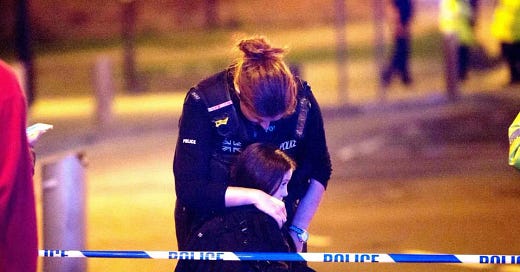

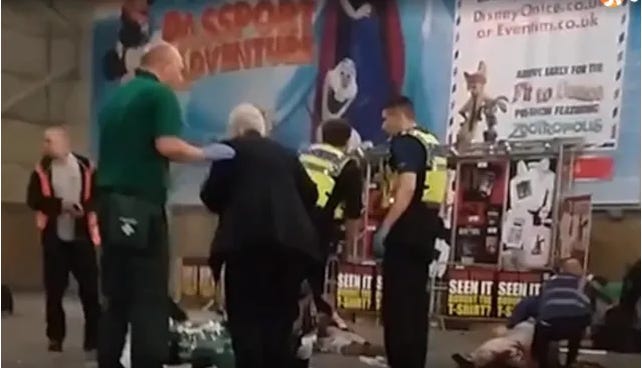



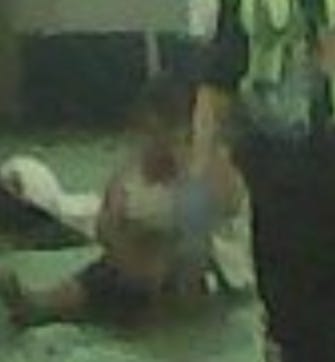

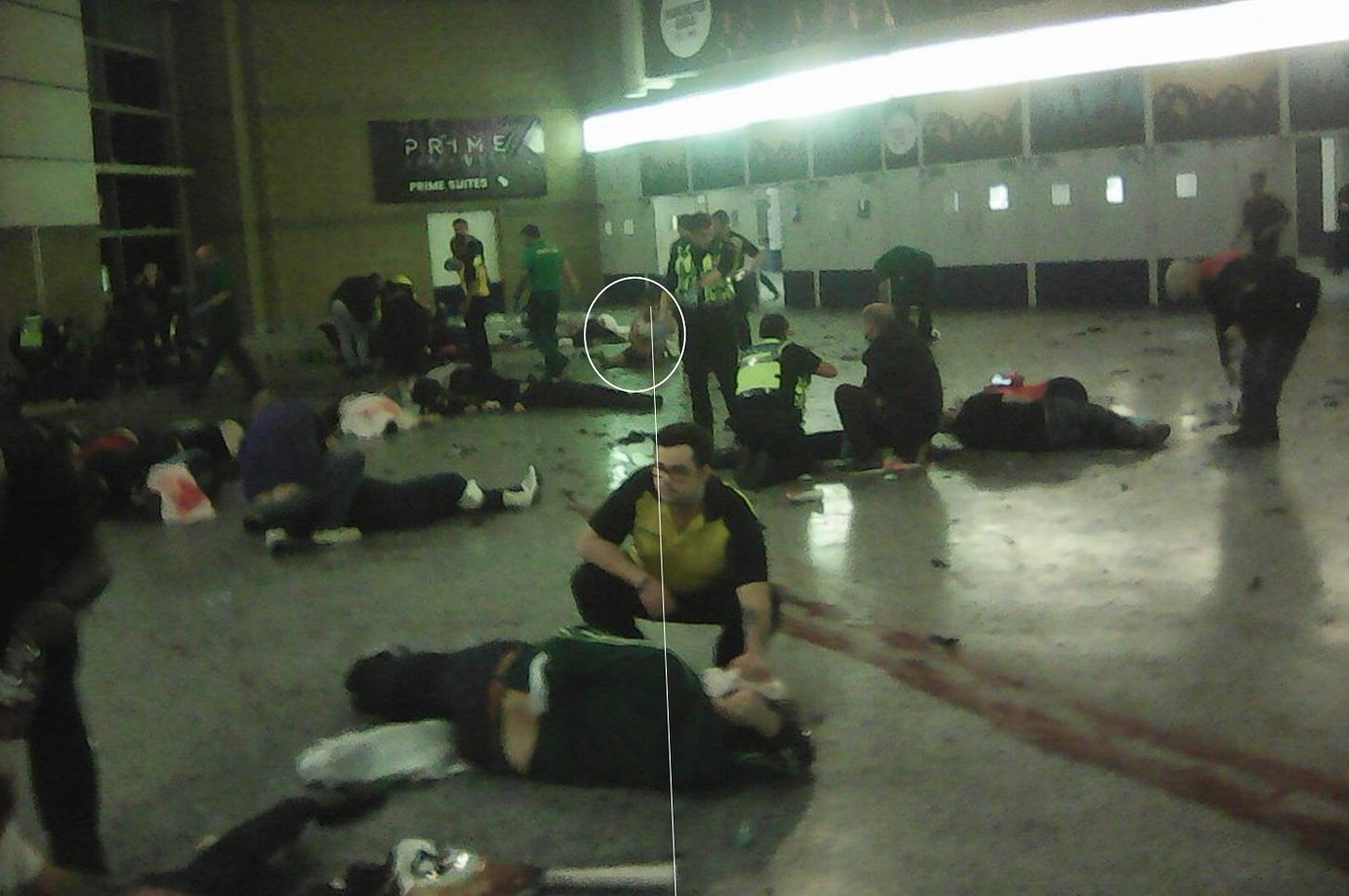
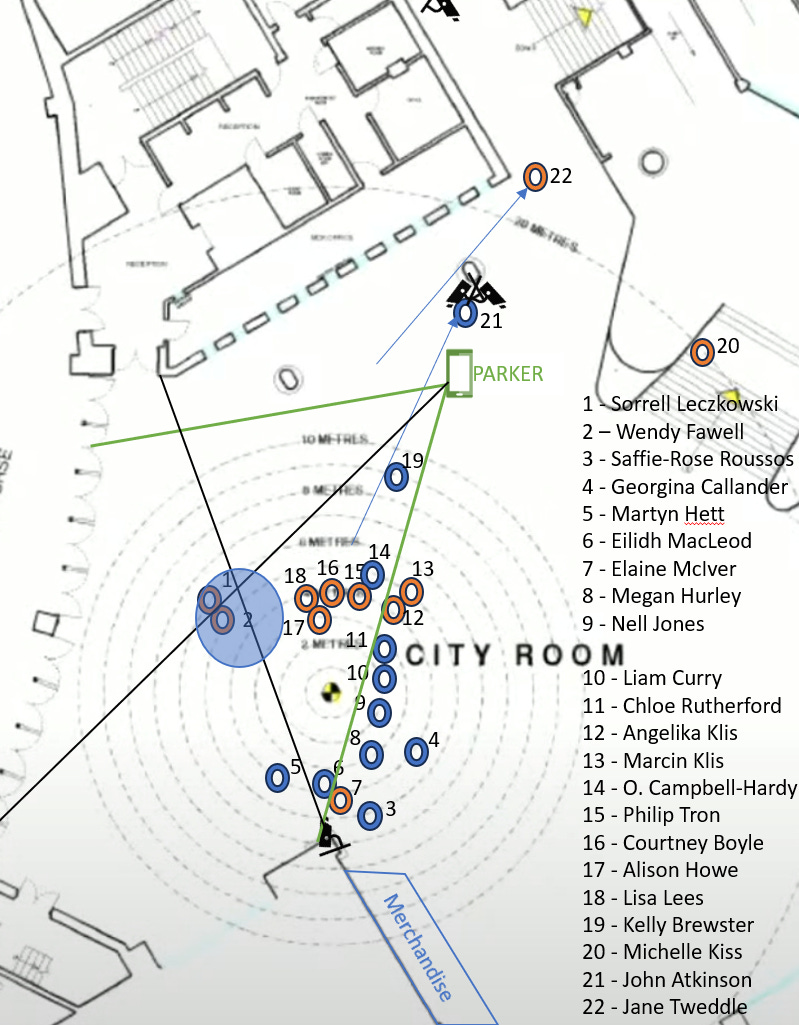
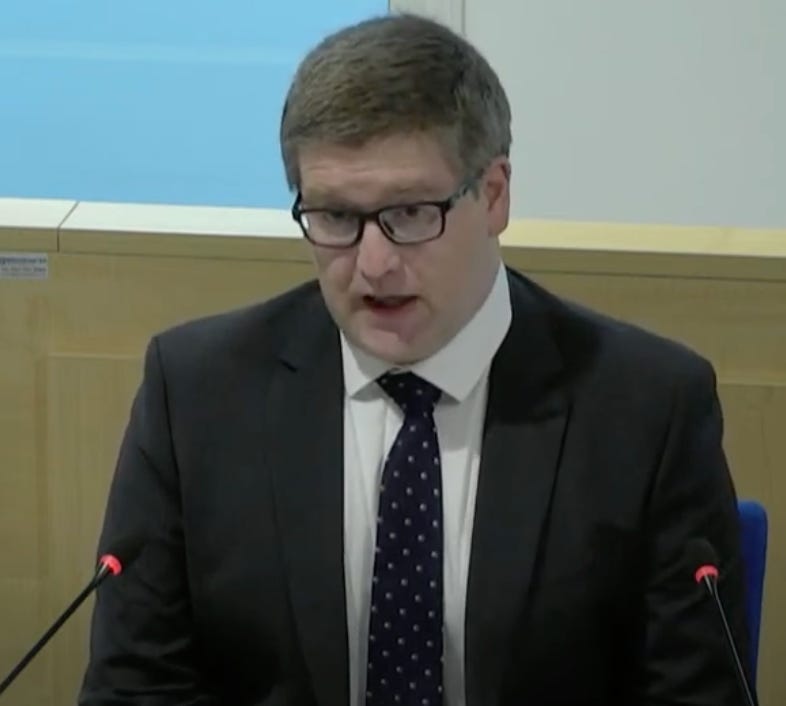
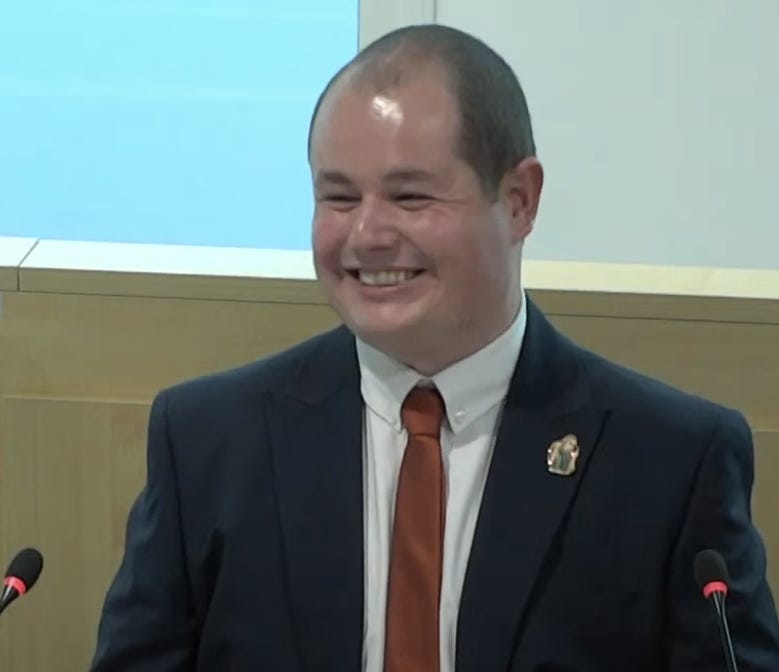
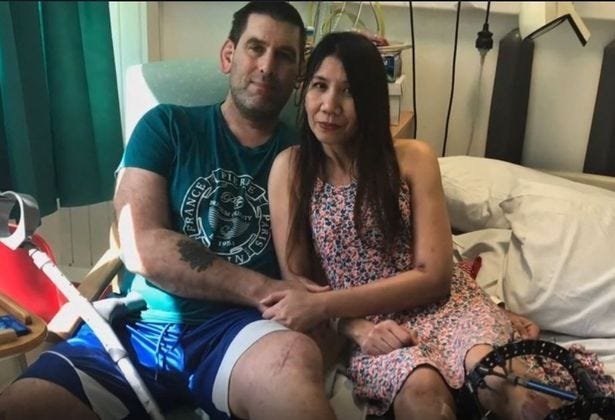

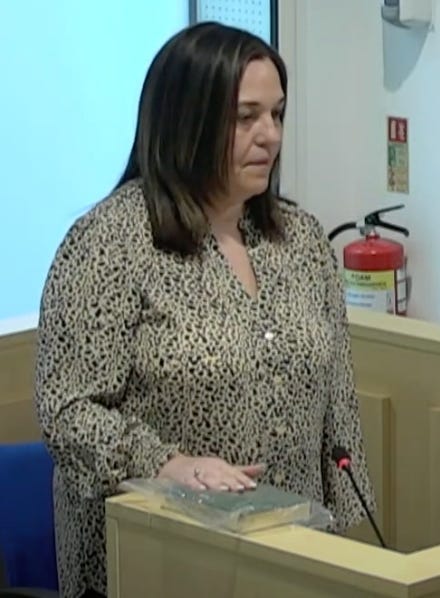


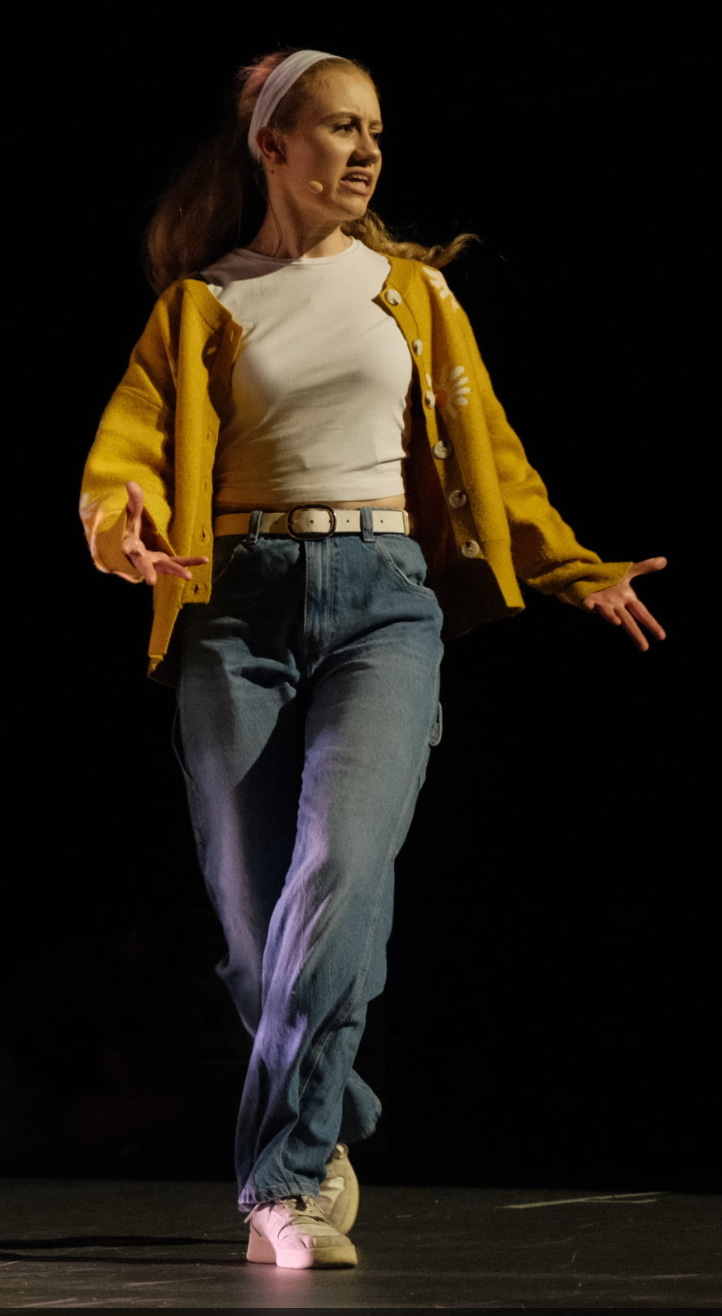
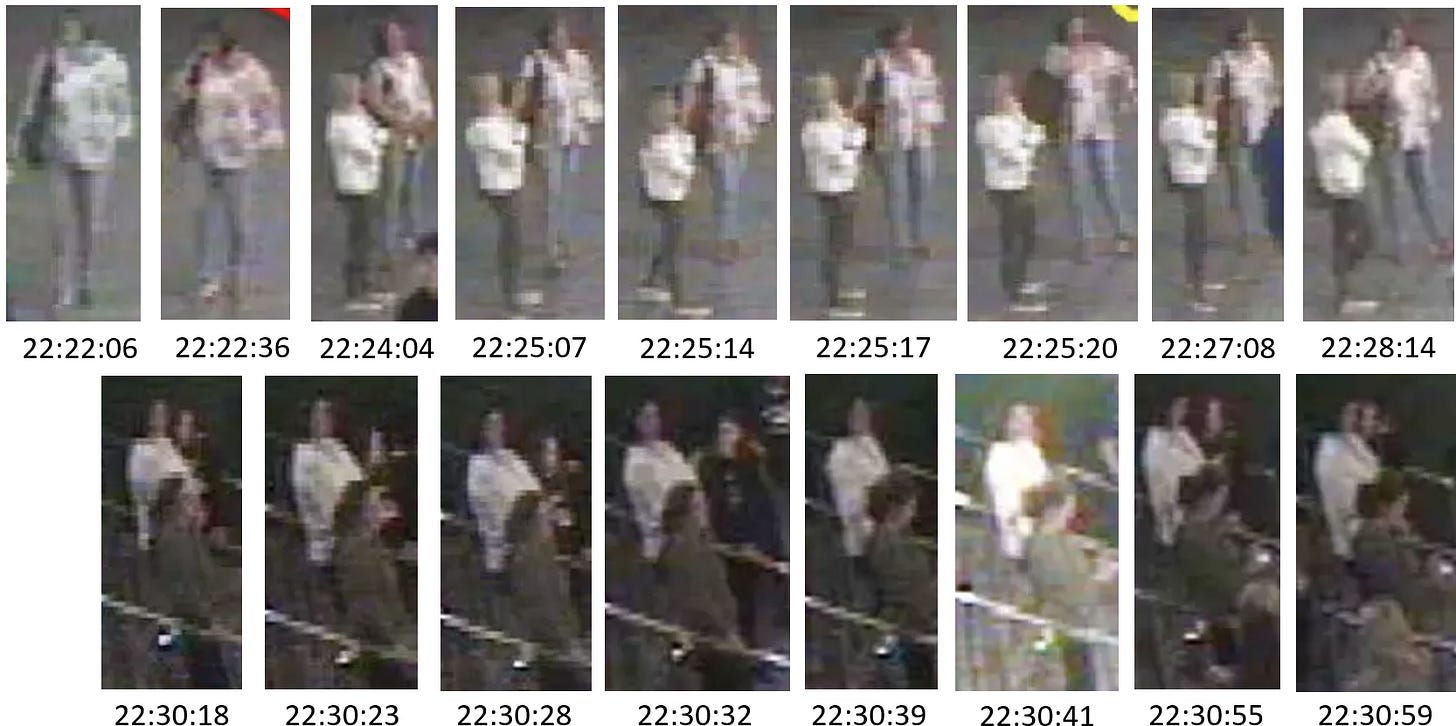


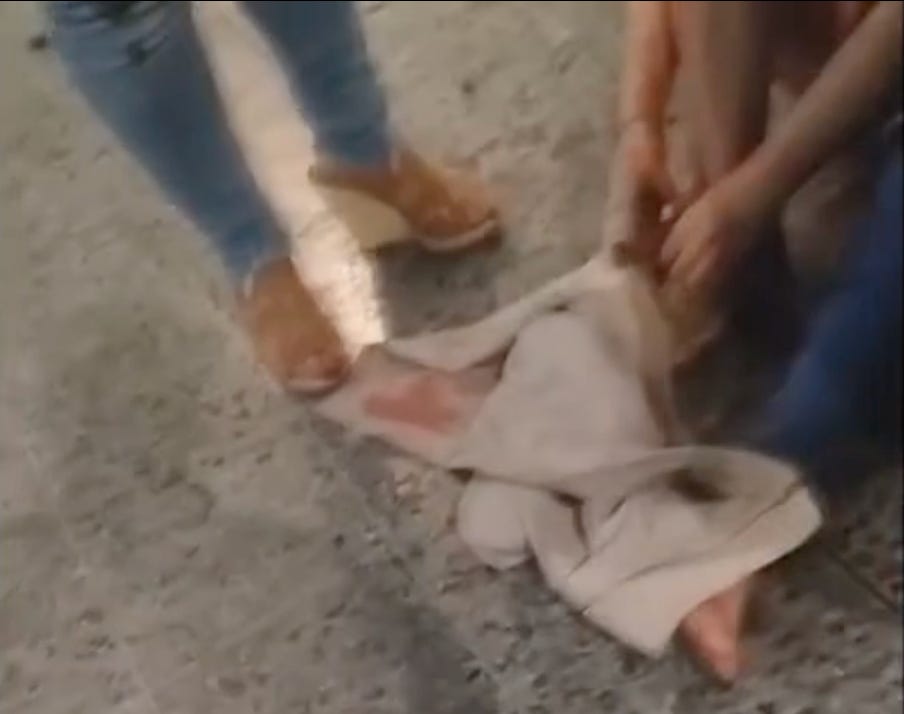
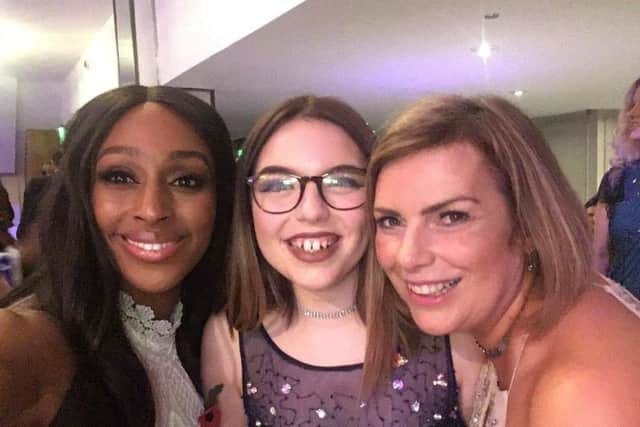
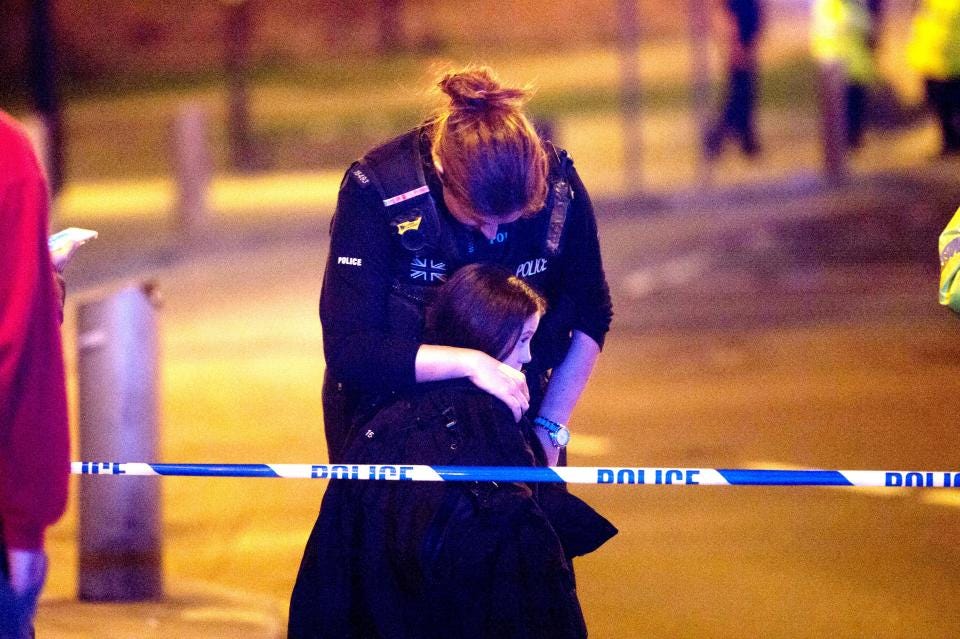
Good write-up! It appears you're touching on the usage of, "crisis actors" and coached individuals that were likely forced to sign non-disclosure agreements which contained everything that isn't legally allowed to be shared (likely because it pertains to, "national security"). The interesting thing about that term is that every nation uses it liberally to eliminate transparency on incidents with national/international policy shaping potential. This is why there wasn't an official and vigorous investigation into 9/11 or CoVID-19. If those events began with a lie or multiple lies then the unconstitutional powers that the various executive branches awarded themselves could only be seen as malicious and opposed the interests of those they allegedly serve.